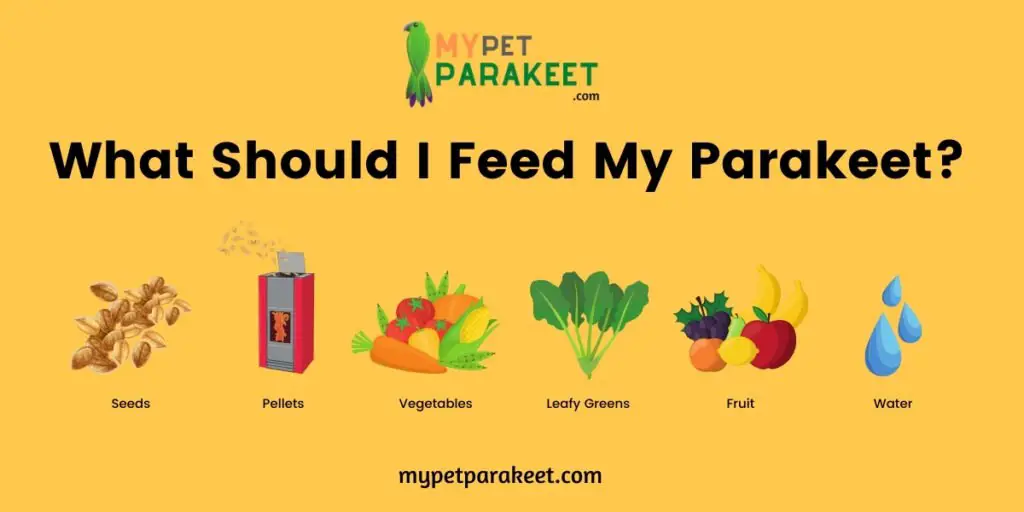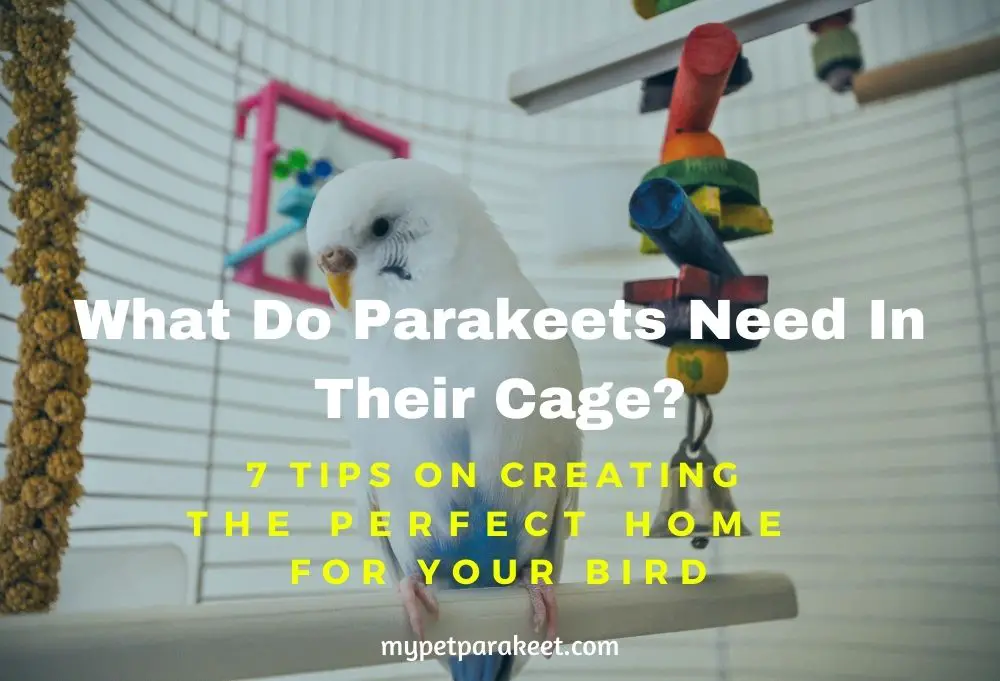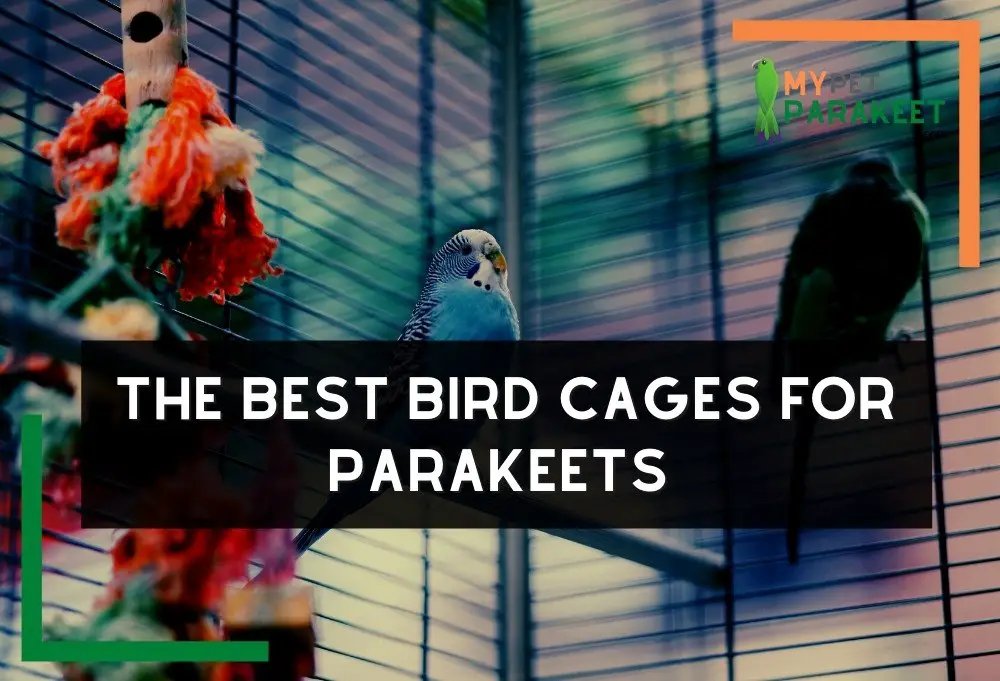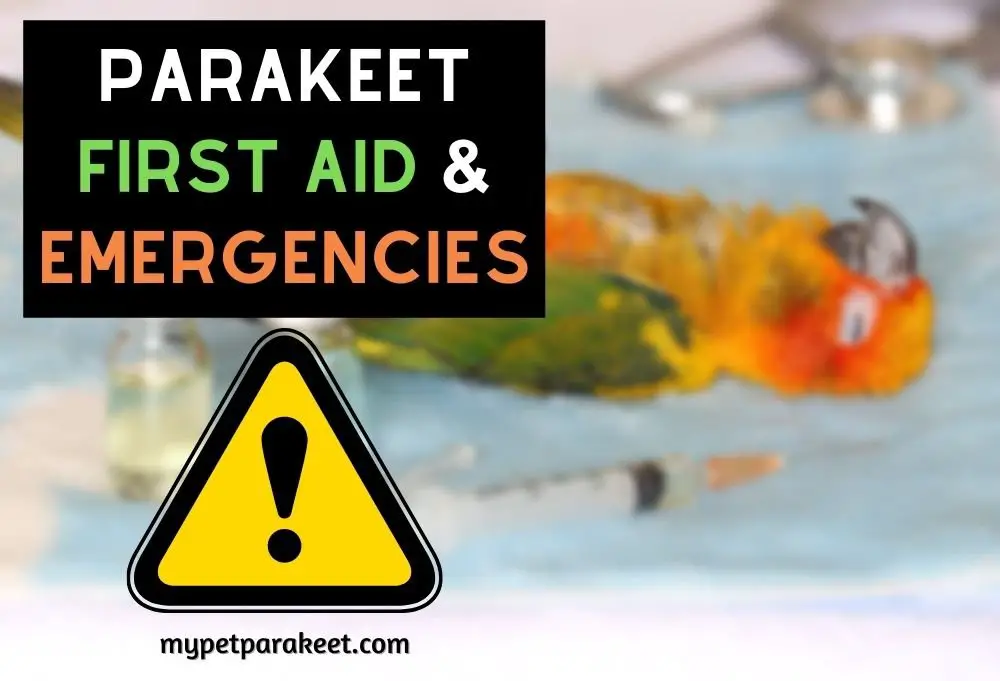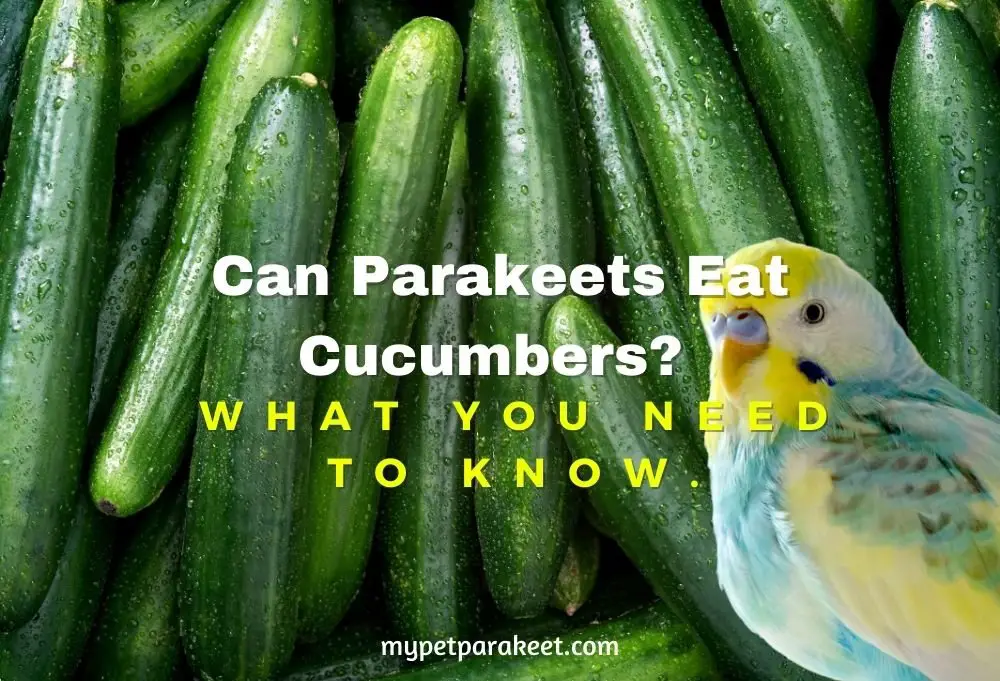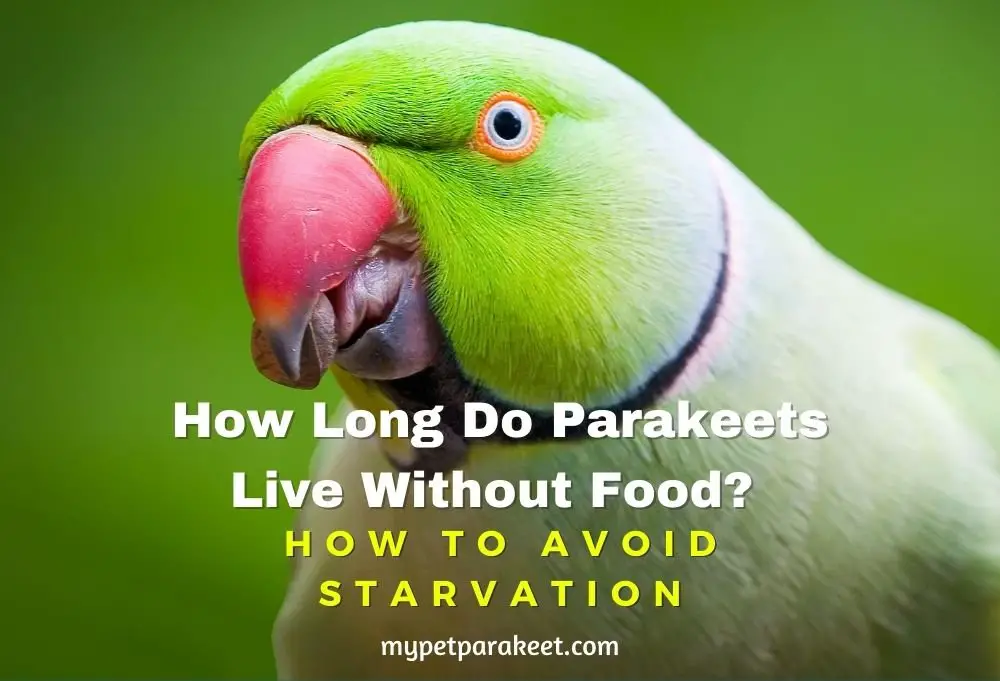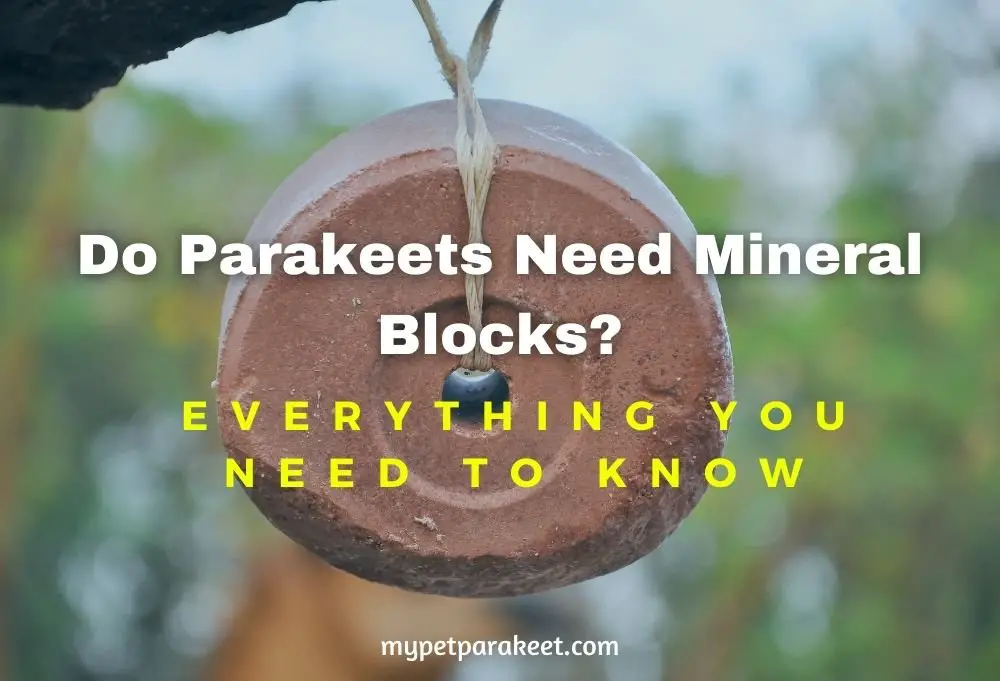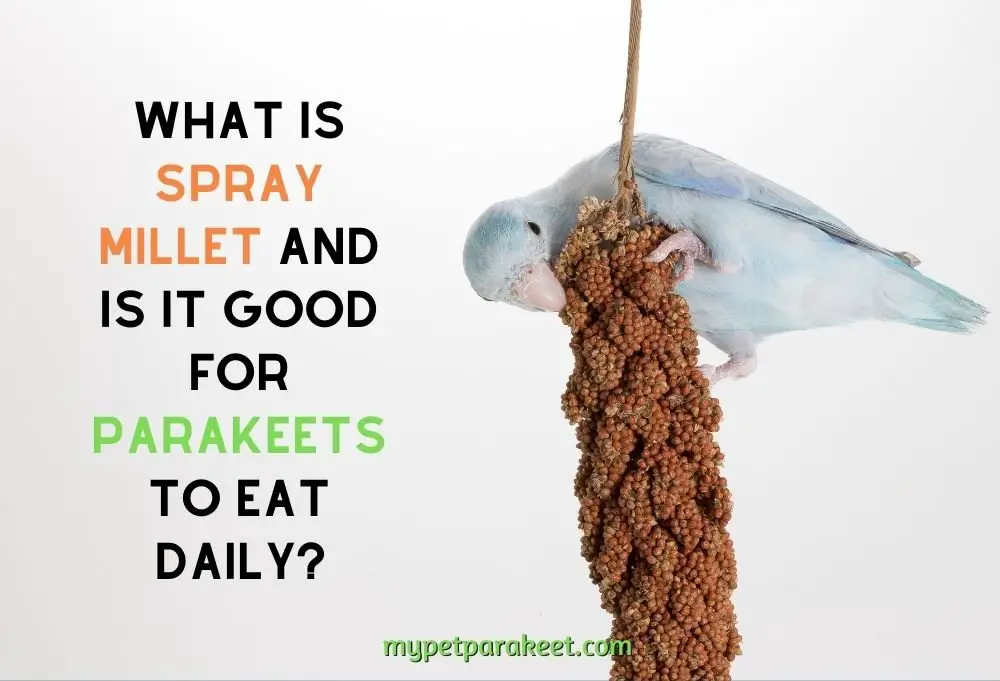Lettuce is one of the foods that we associate with good health and dieting. So if it is recommended as a healthy food for us to eat, can we also feed it to our parakeets?
Yes, parakeets can eat lettuce but it offers very little nutritional benefits, it’s best fed in moderation as a summer treat or as enrichment.
Read on to learn more about the nutritional make-up of lettuce, how too much lettuce may harm your parakeet, the different types of lettuce, and how to offer lettuce in moderation.
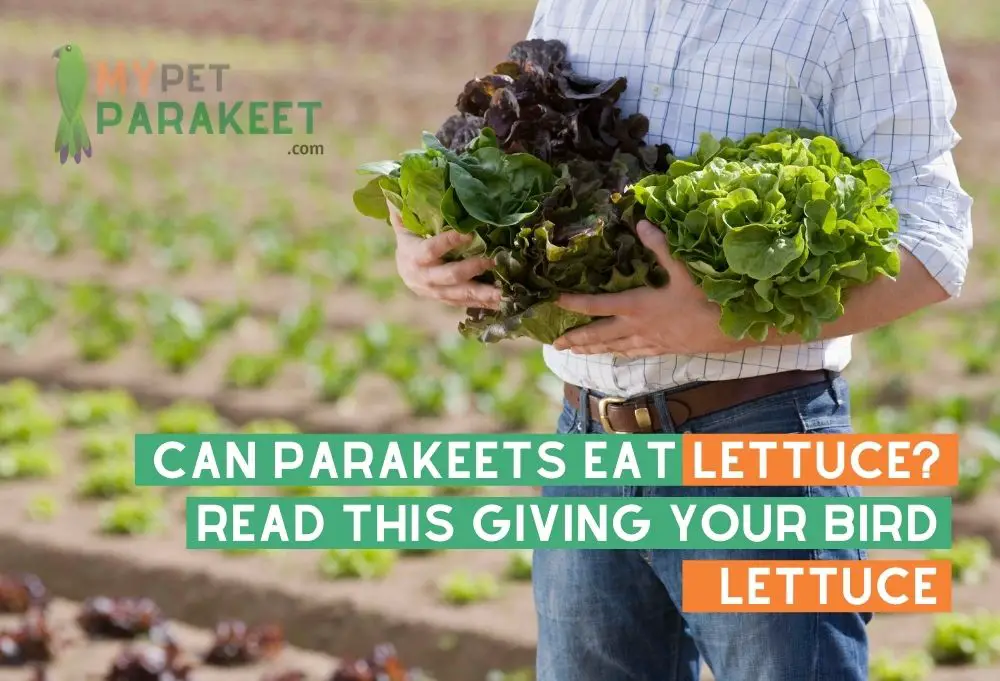
Nutritional Value Of Lettuce
Lettuce is not really as healthy as it is promoted to be! It’s not that it is unhealthy but the majority of a lettuce’s make-up is water, actually, 87% of it is water.
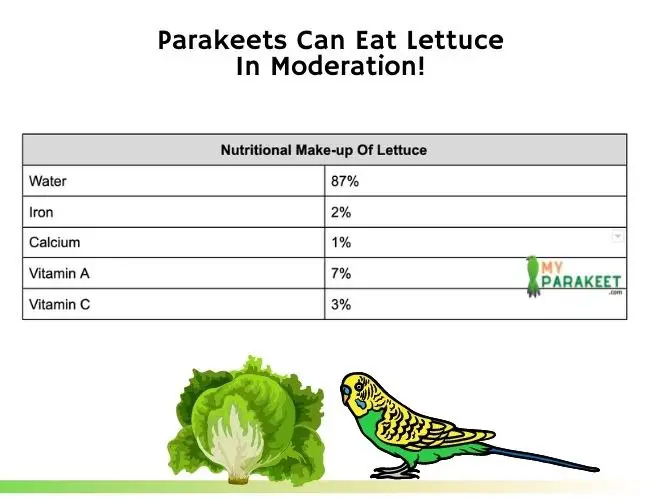
Lettuce is good for human weight loss as it fills you up mostly on water and offers very few calories. Good for losing weight but not good for a parakeet to support itself.
The water content of lettuce can be beneficial for hydration and regulating temperature.
Lettuce does contain good nutrients though such as:
- Vitamin A – beneficial to keratin synthesis, thus supports healthy beaks and nails
- Vitamin C – supports a healthy immune system
- Folate – essential for the conversion of calories into energy
- Potassium – supports a healthy metabolism
- Calcium – vital for bone health as well as a bird’s reproductive health
These awesome nutritional benefits are just in low ratios to the volume of lettuce, so a lot has to be consumed to reap the nutrition benefits.
Can Parakeets Eat Too Much Lettuce?
Parakeets can eat too much lettuce.
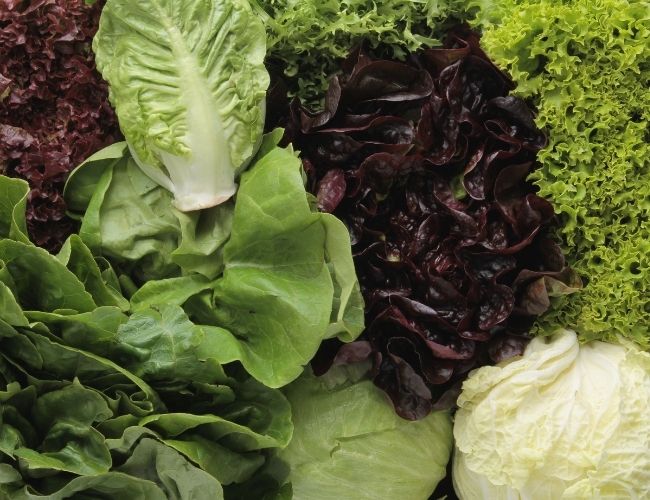
Lettuce is high in water content so can cause excess urine, called polyuria. It can also cause diarrhea. Both diarrhea and polyuria can cause vent issues. If feces and urine are passing with increased frequency or difficulty, then it can cause cloacal prolapse of the vent.
Lettuce as part of a regular parakeet diet may be preferred over nutrition-dense foods and fill up your parakeet’s stomach with little nutritional benefit, resulting in malnutrition.
Prolonged malnutrition can lead to an array of issues including but not limited to:
- Poor body condition e.g low weight, sharp keel, underdeveloped muscles
- Unhealthy beak, nails and feathers. Including flaking and dull colouration.
- Behavioural issues – aggression, anti-social, feather plucking etc.
- Poor immune system and ongoing health issues
- Stunted growth and development
And that’s just to name a few! Your parakeet’s nutrition is the key to its physical and mental wellbeing. As so lettuce should not be a regular part of their diet as it does not offer enough nutritional benefits. It can be used as a treat or as an enriching item.
Iceberg vs Romaine
When deciding to feed some lettuce to your parakeet you have a choice of different lettuce types.
The most common lettuce is iceberg lettuce, but it is also the most nutritionally lacking type with the highest water content.
You are better to choose romaine over iceberg as it is denser in nutrients especially Vitamin A and Vitamin K (supports healthy blood).
Romaine lettuce, while better than iceberg, should still not be a part of your parakeet’s normal diet. You should feed your parakeet dark green leafy vegetables instead as it offers them a dense source of nutrients with all the fun of eating leafy food.
See here for some great info on leafy greens for your parakeet.
Presenting Lettuce To Your Parakeet
Many parakeets love to eat lettuce. Its crunchy leafy texture can be stimulating for them. Since it’s not suitable for their diet, it can have great uses as a treat or as enrichment.
Leave the lettuce in large pieces and hang them in the cage to stimulate some natural foraging behaviors. Your parakeet will be stimulated by the large leaves and the movement of them being hung.
You can also use lettuce to wrap up other treats like seeds or nuts as little “lettuce parcels”. This will get your parakeet excited to rip into the lettuce to see what’s inside!
Lettuce can make great enrichment, especially in summer. In the warm months, you may battle to keep your parakeet cool and hydrated. The high water content can be beneficial for your parakeet to up its water intake and cool down when it feels hot by having a nibble on the lettuce.
As always, wash all produce including lettuce before presentation to prevent your parakeet from being exposed to any pesticides. Also, chop off the base of vegetables (where they grow from the earth) as this is where all pesticides and fertilizers will be the densest.
Recap
While lettuce does have many valuable vitamins and minerals, it is mostly water and is not suitable to be a regular part of a healthy parakeet's diet!
Lettuce can make a fun and stimulating treat for your parakeet and provide extra hydration in the summer months.
